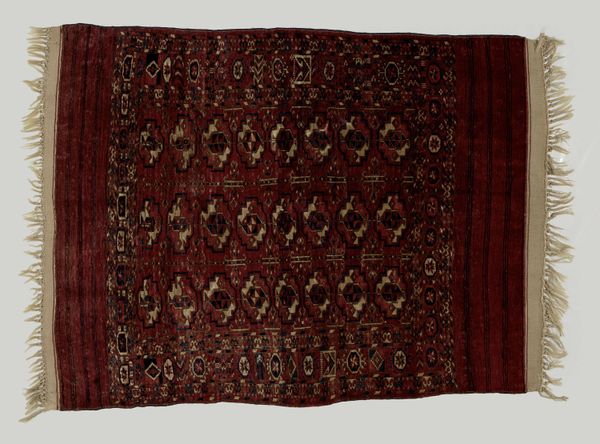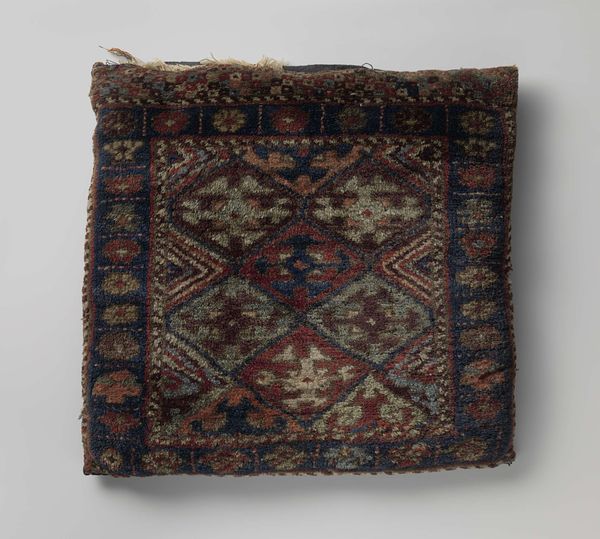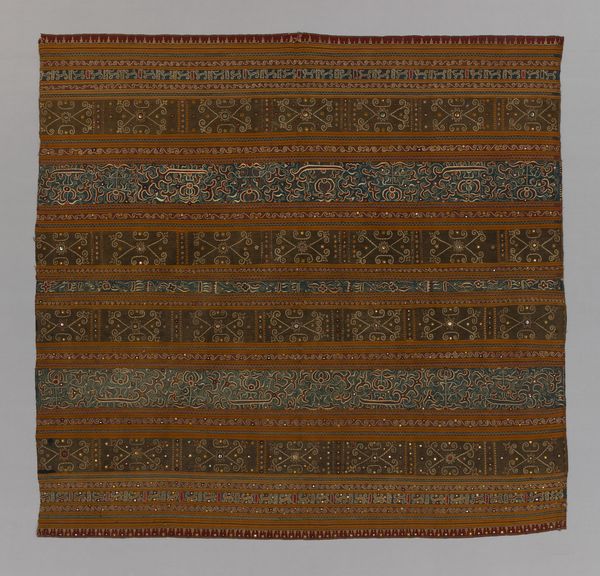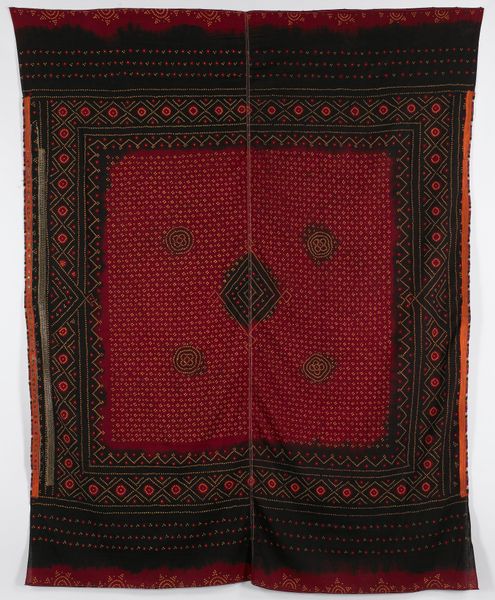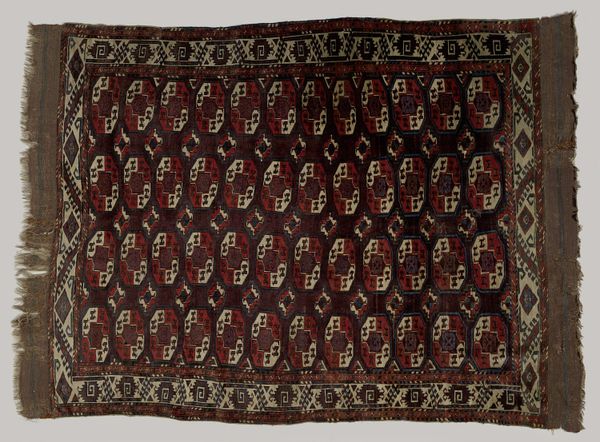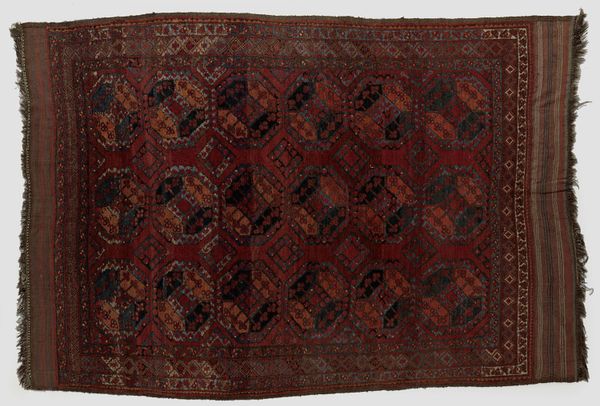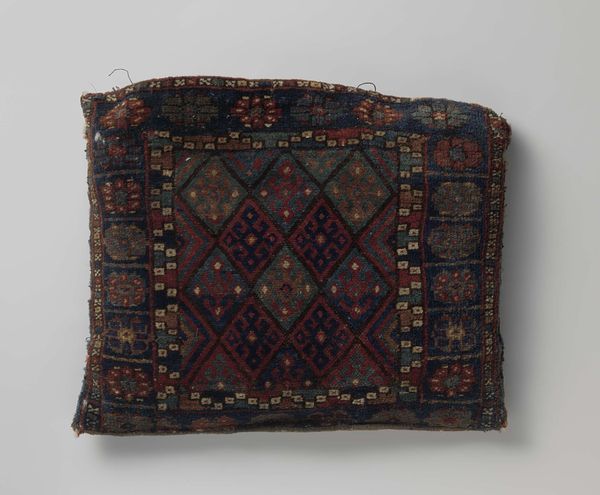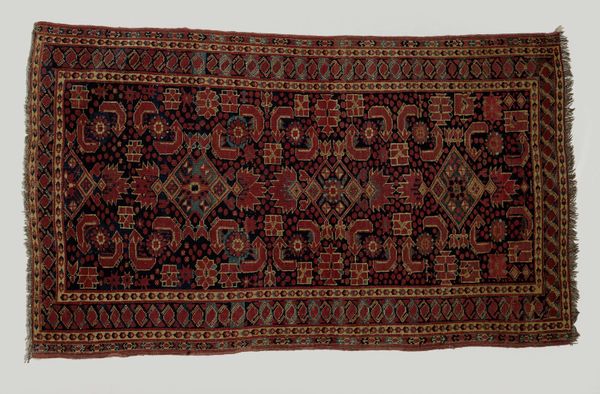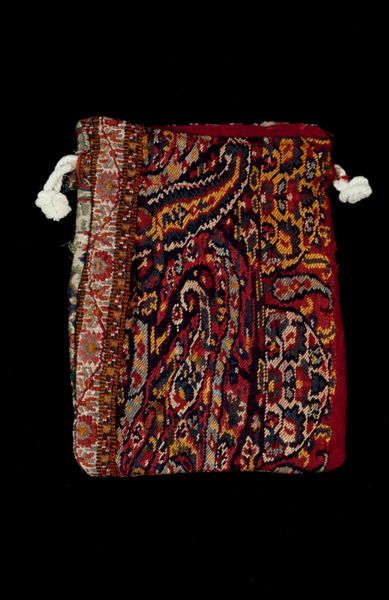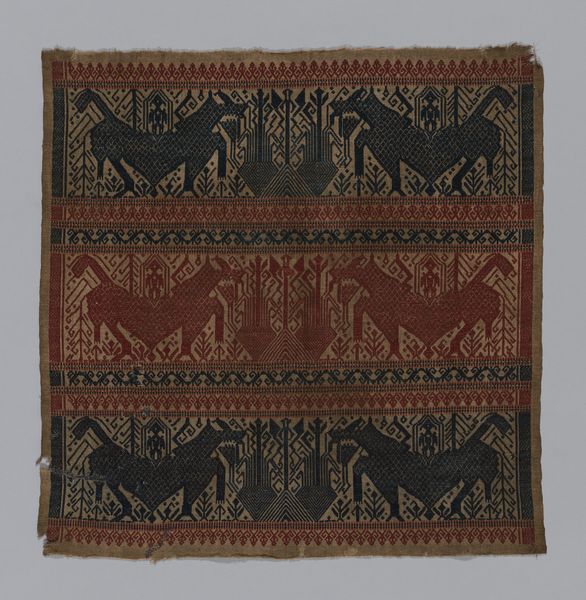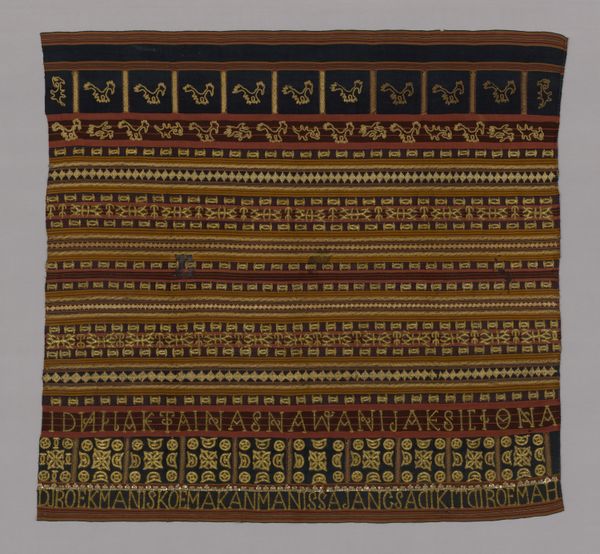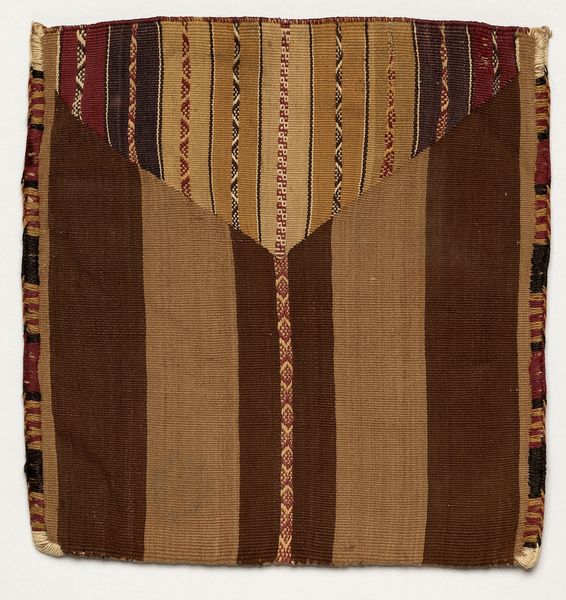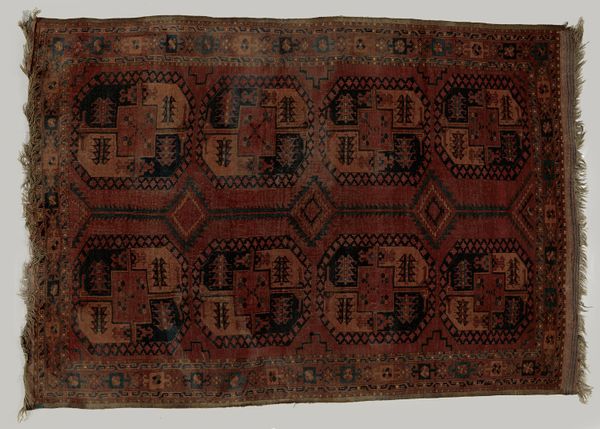
fibre-art, weaving, textile
#
fibre-art
#
weaving
#
textile
#
geometric pattern
#
organic pattern
#
geometric
Dimensions: 90 3/4 x 11 3/16 in. (230.51 x 28.42 cm)
Copyright: Public Domain
Editor: Here we have “Sash,” a textile piece of unknown date at the Minneapolis Institute of Art, utilizing cotton and weaving techniques. It's striking how the geometric patterns, though seemingly simple, create such an engaging rhythm. What can you tell me about the socio-cultural aspects of this work? Curator: This piece invites us to consider the politics inherent in its creation and display. Given the prevalence of geometric patterns, especially within weaving traditions globally, the question arises: Whose traditions are valued and exhibited, and how does the museum context shape our understanding? Who was the intended audience for it? Editor: That's fascinating. I hadn’t thought about it in terms of power dynamics. Do you think the ambiguity around the date of creation affects how we perceive its value or authenticity? Curator: Absolutely. The missing date, coupled with the term "unknown artist," forces us to reckon with the institutional forces that define what's considered 'art' worthy of preservation and study. Is it deemed less significant without a known artist and precise dating? How does that reflect biases toward Western art history's emphasis on the individual genius? The presentation itself is a statement. Editor: So, you’re suggesting that the display itself is making a broader commentary about how museums validate certain artistic practices. Curator: Precisely. The “Sash”, as it is named, enters a discourse about the value of labour, tradition, and the power structures that dictate what we see and how we interpret it within a museum. I wonder, does seeing it this way influence your reading of its aesthetic qualities? Editor: It does. I initially just appreciated the patterns, but now I'm considering the historical context and what the museum is saying by showcasing this specific, possibly under-recognized, form of artistry. Curator: Indeed. This piece really demonstrates how understanding the politics of imagery enhances our appreciation for art's complex role in society.
Comments
No comments
Be the first to comment and join the conversation on the ultimate creative platform.
